
Reservoirs have swept away countless villages. These engineering works from the middle of the century annulled many valleys in order to generate energy or store water. Pragmatic decisions that have affected environments of Mallorca, in Gorg Blau, and Galicia, for example forced to move locations such as Portomarín. The drama came many times when the neighbors refused to leave. Through expropriations villages were left abandoned that did not always end up under water. This is the case of Lanuza, which did not stop trying to resurrect itself until it did.
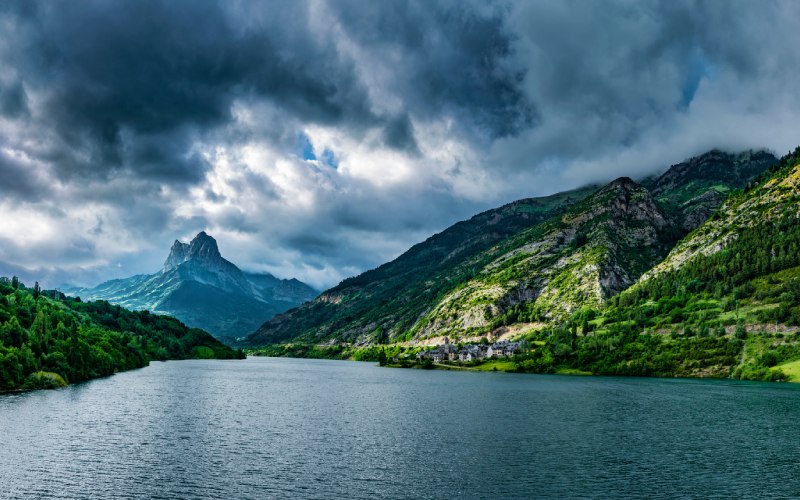
Lanuza. | Shutterstock
During the 1960s the swamps were a major infrastructure. Despite setbacks such as those at Ribadelago in Galende, where design and construction errors led to the razing of the village on Lake Sanabria, they continued to proliferate. The plans of the Ebro Hydrographic Confederation, or CHE, had one of their objectives in Lanuza. In this way, it was proposed to change the pastures of the upper Gállego for reservoirs. Something that, as in the surroundings of Mont Rebei, an area between Lleida and Huesca famous for its routes and hanging hermitages, wiped out much of the local livestock. However, in the case of Lanuza it would mean the death of the village itself.
The projections made during the planning phase left the town below the water level. Even the church in El Salvador was not spared. Against their will, the neighbors were leading an exodus. They went from nearby places, such as Sallent de Gállego, to more remote places such as Jaca or Huesca. A drip that started mainly in 1976, when the flood began. At the beginning of 1978 was when the last capezuto, people of the population, left.
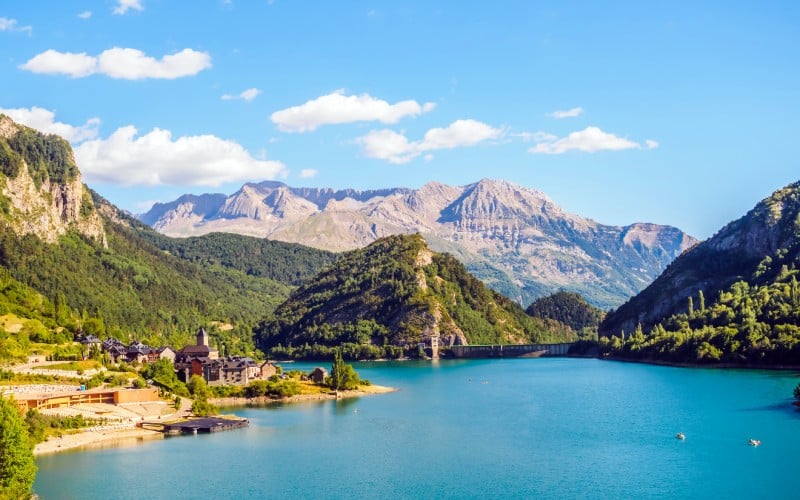
View of Lanuza to the south. | Shutterstock
Despite the spectacular nature of the Tena Valley with the new reservoir, the alpine cut pictures did not compensate many locals. Even less so for those who were left homeless. Bubal, a reservoir south of the Lanuza reservoir, experienced a similar situation. However, its fate was sealed by the water. The fate of its neighbors slightly above the Gállego did not. To his delight, it was found that the projections of the CHE had failed. It was barely eleven meters. A trifle. But that the maximum point of the aquatic mass happened of the 1,286 meters to little more than 1,275 supposed a new turn of the events.
During the 1980s it was confirmed that only a few of Lanuza’s houses would be submerged. The core of the Pyrenean village would remain above the safety limit. Therefore, it was habitable. It was the legal loophole needed by the capezutos to take action. Through a neighborhood association they began to demand the return of the expropriated land. Their intention was to return as soon as possible to inhabit a place they considered theirs. Their first focus was predictable: the church.
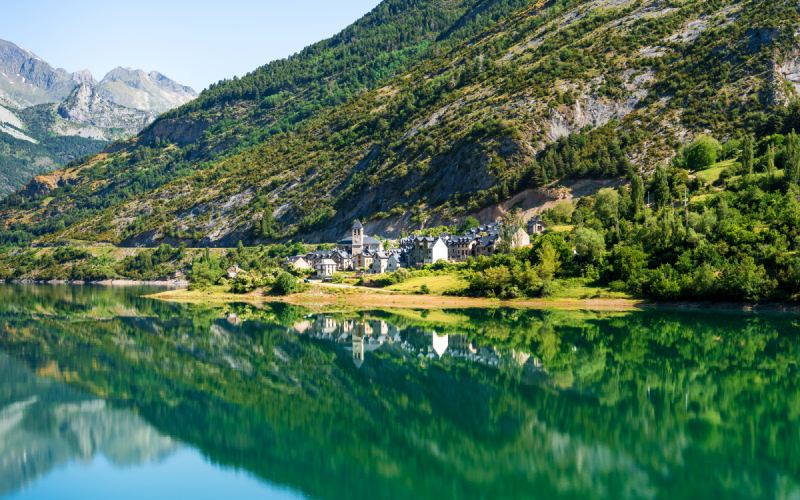
Lanuza reflected in the reservoir of the same name. | Shutterstock
Reformed in the 19th century after being burned by the French, it is Romanesque in style. It was the starting point, in 1992, for a series of land buybacks that encouraged more and more neighbors to recover what was theirs. The temple showed, however, the traces of 15 years of abandonment. The looting was clear, as it was in homes and common buildings. Nevertheless, it was consolidated.
Achieving drinking water and other basic services, such as electricity, were the steps that followed. A reflection for villages like the not too distant Jánovas. Located between Aínsa, Broto or Torla and Sabiñánigo, in their case the Ara River was not dammed, but there was a forced abandonment. Now, with all the original inhabitants dead, they have managed to bring light to the place and prepare their new room. Lanuza, on the other hand, already has dozens of rehabilitated buildings and is a regular destination for those who visit the Tena Valley.
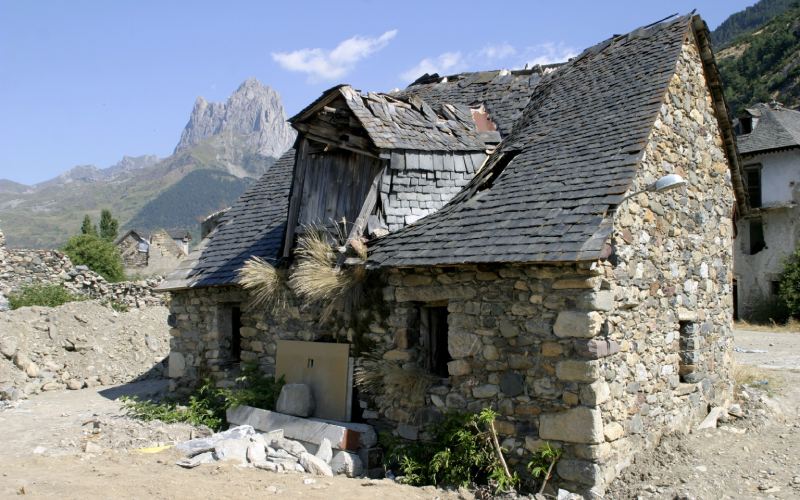
Old house in Lanuza. | Shutterstock
Its location in the middle of the reservoir to which it gives its name, with Sallent de Gállego a stone’s throw away, makes Lanuza a place that is quite popular among tourists. You can even go from one village to another on foot, on a route as outstanding as it is easy. With the possibility of staying or eating there, it seems that it has managed to overcome depopulation almost definitively. The great expenses carried out by the neighbors, without state aid, have left a village with great charm and purely mountainous appearance.

Lanuza reservoir. | Shutterstock
Surrounded by mountains and water, it is part of the Pirineos Sur festival. An event that has been held since the beginning of the 90s, with its first official edition in 1994. Spread throughout the Tena Valley, Lanuza hosts a floating stage whose concerts helped to raise awareness of the fledgling neighborhood. With the influx of thousands of people, some 50,000 in the last few years, came the consolidation of the change that would mark the entire region: tourism for livestock.
The peaks of Los Infiernos or Balaitús form spectacular massifs that allow the practice of mountaineering. In their skirts are glacial lakes or spectacular ibones, like the Piedrafita de Jaca. The hiking routes allow you to reach them easily. At the same time, Formigal-Panticosa is a reference for winter sports that also falls in the valley of Tena and near Lanuza.
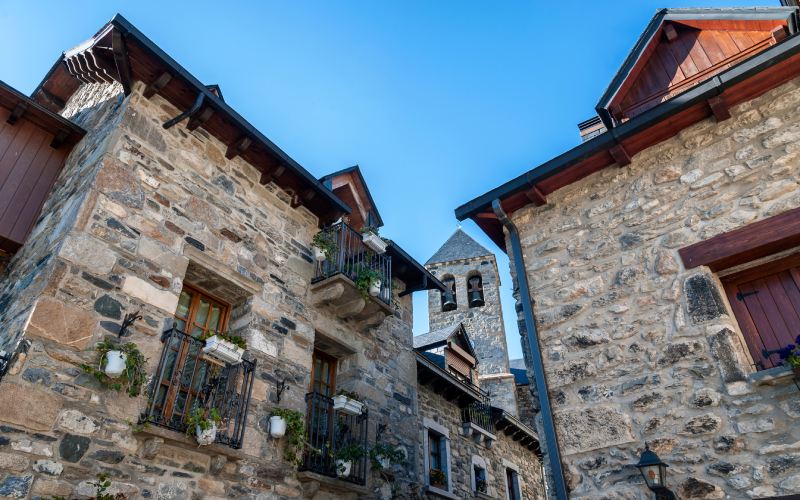
View of the church tower of El Salvador. | Shutterstock
The entrance to this historical territory is through a gorge, the Santa Helena gorge, with remains that go from a fortress to a hermitage-sanctuary, passing through several dolmens. Also, Jaca or Biescas are well connected with the town, which increases the chances of a getaway to the place. In an era of depopulation and migration to the city, Lanuza is a kind of Lazarus. One who pulled the head out of the swamp in time.